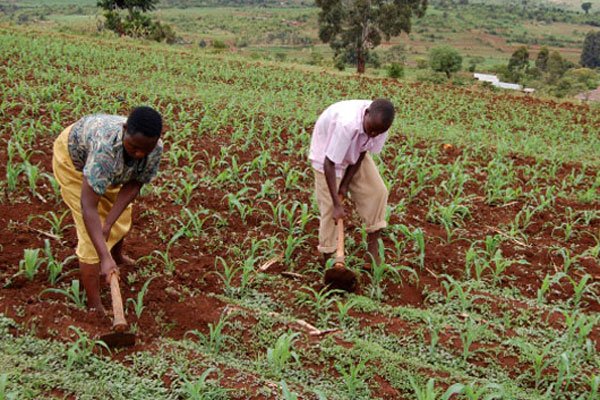Following the current heavy rainfall in several parts of Uganda, farmers have been asked to delay planting crops until March when the regular rainy season begins.
Officials from the Uganda National Metrological Authority told journalists at the Media Centre in Kampala on Tuesday that the current rain is due to climate variability and is expected to stop by next week.
This comes at a time when most Ugandans are confused as to whether the current rains signal them that the planting period has started.
Uganda has four seasons with December to February being usually dry. The rainfall season covers March, April and May before the dry season that starts from June through July and August in most parts of the country much as it’s a wet season in some areas.
The period of September, October and November normally a wet season in the county.
“We are in the dry season. The current rain is almost wide spread across the country and it started last week and it is still continuing. But this particular rain does not in any way signal the beginning of the rainy season,” said Mr George William Owony, a senior meteorologist at Uganda National Meteorological Authority.
Mr Omony said: “This rain is referred to as off season. It means the kind of rain that comes during the dry season. We should also know that when it is dry season, it does not mean that there will be no single dot of rainfall. Similarly, during the dry season you can see dry days for one or two weeks. Those are eventualities that are brought about by the variability of the climate.”
He advised farmers to use the rain to prepare their gardens as they wait for the regular rainy season in March.
Mr Omony said their projection at the Meteorological department shows that the rains will continue for the next two weeks in some parts of the country.
“By next week, this rainfall will start retreating southerly. Meaning most part of the country will begin going back into the normal dry with the exception of areas around the lakes. Areas around the lakes will continue to receive more rainfall due to the local influence of the lake,” he said.
Mr Abubakar Kalema, a weather analyst at the Uganda National Meteorological Authority said that the current rains are caused by the convergence of moist wind in different big water bodies like the Indian Ocean and also in the Congo Forest that create a lot of moisture content in the atmosphere.
“We always have the moisture converge over our country. This is because we are expecting the rain belt to be in the Southern Hemisphere because of the weakening of the Northern hemisphere winds,” he said.
Mr Kalema says that the Country should expect more changes in the weather as global warming persists.
“There is an element of climate variability. We have always put a lot of emphasis on climate change but in actual sense, there is also the issue of climate variability. Climate change is long term like 30 years. But climate variability is the one that comes as a result of fluctuations in the weather within a very short time,” he said.
The changes in weather patterns is affecting other East African countries like Kenya, Rwanda and Tanzania and South Sudan and Tanzania where locals say the rains have been the heaviest during a dry season in ten years.

The News Editor ,Reporter at Kagadi Kibaale community Radio




